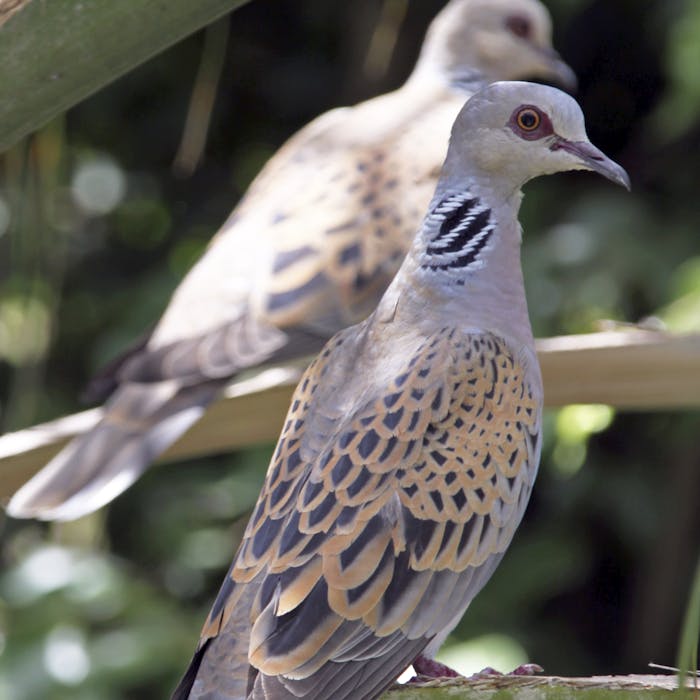
Turtle Dove - a symbol of love that is vanishing from our countryside
The turtle dove is Britain's fastest declining bird species and is on the brink of extinction. A small and pretty pigeon, it breeds in lowland England and winters in Sub-Saharan Africa.
It is Britain’s only migratory pigeon or dove, but arrivals and their broods have declined by three-quarters since 1976, with the estimated UK population dropping from 125,000 pairs to around 45,000 pairs.
The turtle dove is just a little bit smaller than a collared dove, and slightly larger than a blackbird. Its upper parts are distinctively mottled with chestnut and black and its black tail has a white edge.
It breeds in woodlands, orchards and well-wooded parks, mainly in the warmer, drier south and east of the UK. Adults feed on cereal and wildflower seeds, but provide their young with 'pigeon milk' - a regurgitated, milky substance from a food-storage organ called a 'crop'.
The visitors to these shores spend April to September in southern Britain, migrating more than 5,000 km to get back to Africa in the autumn. They undertake a perilous journey - huge numbers are shot as they pass through France, Spain and Morocco, and also when they reach their wintering grounds in Senegal.
The gentle purr of the turtle dove is an evocative sound of summer, but has become increasingly rare following rapid and sustained population declines. One cause of the decline is thought to be lack of seed and grain as food during the breeding season, resulting in a much shorter such season with fewer nesting attempts. The species is now included on the Red List of conservation concern. The best chance you have to see a turtle dove is in East Anglia and South-east England, where the species has maintained its highest densities.
Turtle doves have featured in art and culture for thousands of years. Their beauty, song and behaviour inspired Ancient Greeks and Romans, Elizabethan poets, modern musicians, and painters. Perhaps because of their endearing, soothing purr and tender affections when seen perched in pairs, they have long been symbols of love.
Further reading
Links to external websites are not maintained by Bite Sized Britain. They are provided to give users access to additional information. Bite Sized Britain is not responsible for the content of these external websites.
